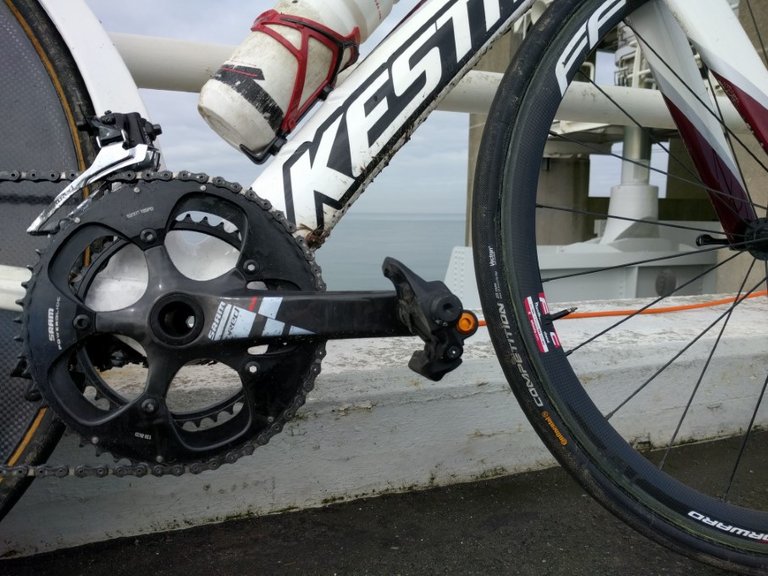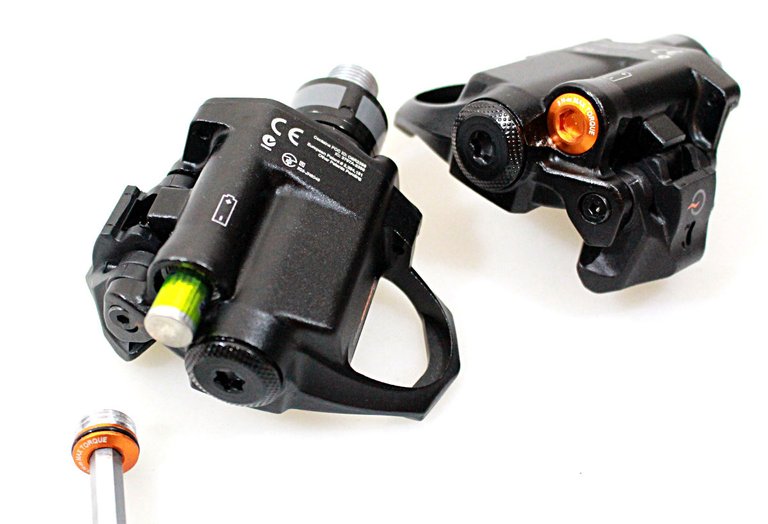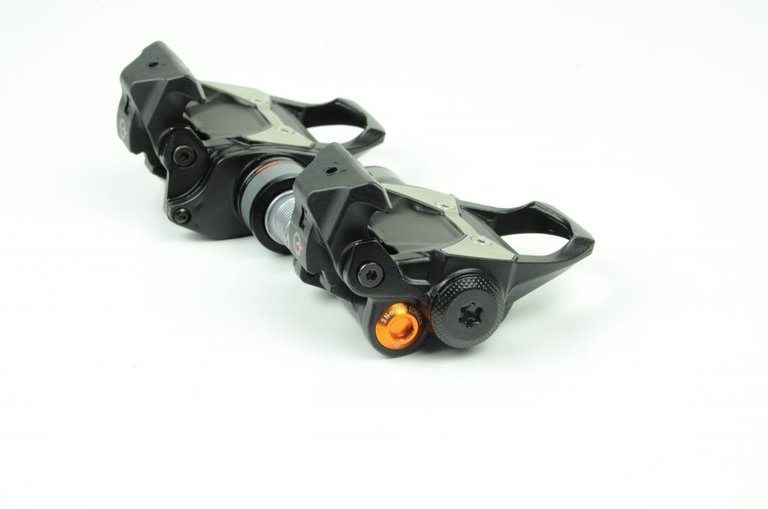
We have arrived at our second powermeter to review. This time it is one which has been in our possession for over a year. By extension we can guarantee that this piece of equipment has been tested in all types of weather, on all types of terrain and on both training and races. The PowerTap P1.
Bike maintenance for dummies
Where you had to replace a crank arm on the Stages Ultegra R8000, the need for technical knowledge is even reduced with the PowerTap P1. Changing pedals is about the simplest thing one can do on a bike. If we add to the equation that, in comparison to other pedal powermeters, there is no need to tighten the pedals to a certain torque or using a special procedure. Shove it in, tighten it, done.
The pedal has a rather bulky look due to the feature which simplifies life the most. Power is supplied by one AAA battery in each pedal. Along with AA batteries these are the most common in the whole world, allowing you to recharge on the most exotic of training places!
Lifespan of these batteries are dependent of the type. PowerTap claims a life expectancy of 60hrs for lithium batteries, alkaline batteries will have a shorter lifespan. But is we add the cheapness of alkaline batteries to the equation, you can reduce the comparison to a mere price/hr which... we haven't done.

Pair, calibrate and ride
The PowerTap P1 is both ANT+ and BlueTooth Smart compatible. Even more, it was one of the first third party powermeters to be accepted by Polar. Foor the full Polar compatibility list we will have to direct you to their site. Pairing the pedals to our V650 and V800 wen smoothly, the pedals wake up automatically when they are in motion. Idiot-proof, an advantage for our editors.
When you first pair the pedals to a headunit, crank length has to be set. The PowerTap P1 has to be calibrated as well to give correct data. Start your session, push the button, wait 2 seconds, done. Note that this does not have to be done prior to each use. PowerTap calibration guidelines are to perform one when temperatures have shifted significantly or after (re)installation. This last one is something that will certainly happen: the ease of installation (no kidding, I can switch the pedals from bike A to bike B in less than 2 minutes) allows you to equip multiple bikes with only one powermeter.
Comparison
PowerTap claims, just as everybody else, a 1,5% accuracy on produced data. On our home made test set we compared the PowerTap P1 with the Elite Drivo and the Stages crank. It's important to know that a similar test took place earlier. That time the pedals were compared to a Cyclus2 at the UZA and showed to be a consistent 15 to 20W below the standardized machine. We can expect the PowerTap to be on the bottom of this comparison too. The graphs will be placed at your disposal later on.
Final thoughts
437 grams is the weight penalty, given that Shimano 105 pedals (the most sold of the bunch) weigh in at around 285 gram, we have a delta of 152 grams, the equivalent of 10 Stages Ultegra R8000. The pedals look bulky, but as long as you don't take your corners with the inside leg down and close to the curb, you should be clear of hitting the concrete.

PowerTap P1 pedals provide a double sided measurement for 1000 euro. The cheaper alternative are the PowerTap P1S, single sided measurement for 550 euros. It is important to know that the pedals are not compatible with Shimano cleats. Fitting cleats come in the package, but if you want to change them, you have to fave the PowerTap monopoly, which is about the same price range as Shimano.
Our thoughts on the PowerTap P1? Ease of use, check! Looks, a bit bulky, so a slight downside. Battery, easy and available, happy with the life span, so positive as well. Accuracy, to be confirmed...
This has been a good buy. Only I seem to pedal a consistent 49/50, which would have made me a P1S candidate as well.